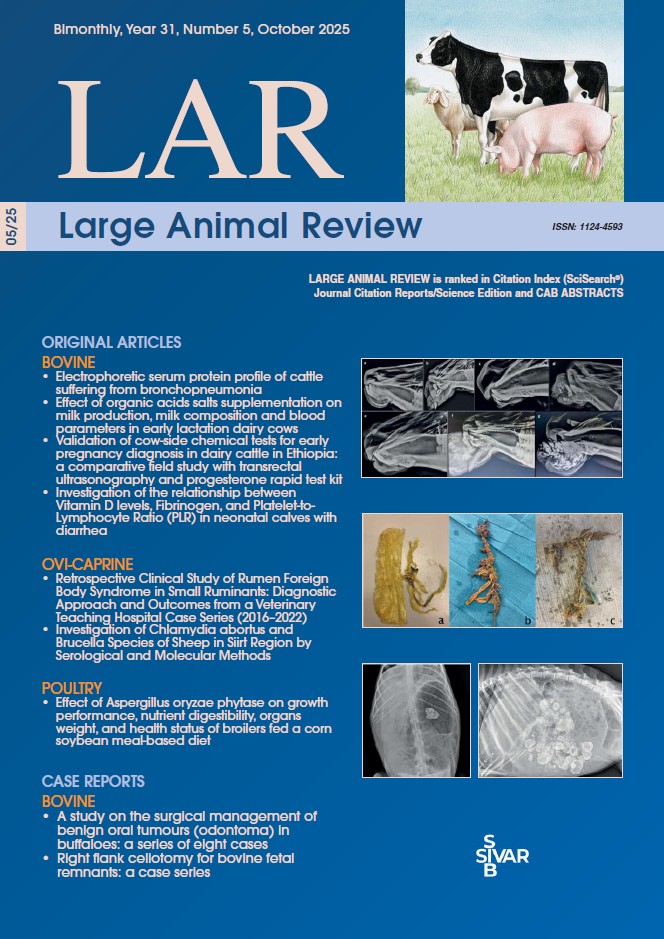Retrospective Clinical Study of Rumen Foreign Body Syndrome in Small Ruminants: Diagnostic Approach and Outcomes from a Veterinary Teaching Hospital Case Series (2016–2022)
Abstract
Rumen foreign body syndrome is an underdiagnosed condition in small ruminants due to its nonspecific clinical presentation and the limited availability of literature on the subject. This retrospective study aims to describe the clinical, laboratory, imaging, and necropsy findings associated with rumen foreign bodies in sheep and goats hospitalized at the Veterinary Teaching Hospital of Lodi between September 2016 and March 2022. Medical records of all small ruminants admitted during this period were reviewed, and cases with a final diagnosis of rumen foreign body syndrome were included. Data collected included anamnesis, clinical presentation, laboratory findings, ultrasonography, radiography, treatment, follow-up, and necropsy outcomes. Out of 348 cases, 15 animals were diagnosed with rumen foreign body syndrome. Of these, 9 died and 6 recovered. The most significant clinical finding was altered ruminal motility, observed in 80% of cases, often in association with ruminal atony, tympany, and abdominal distension. Hypothermia was identified as a negative prognostic factor. Blood gas analysis, performed in 11 animals, revealed acid-base imbalance in 8 cases (73%) and hyperlactatemia in 7. Radiography was diagnostic in all 7 animals in which it was performed. In 5 of the 9 deceased animals, the diagnosis was established only at necropsy. Most foreign bodies consisted of plastic materials; less frequently, bezoars or ropes were found. This study highlights the importance of integrating anamnesis, clinical examination, and imaging, particularly radiography, for the timely diagnosis and management of rumen foreign body syndrome in small ruminants.


